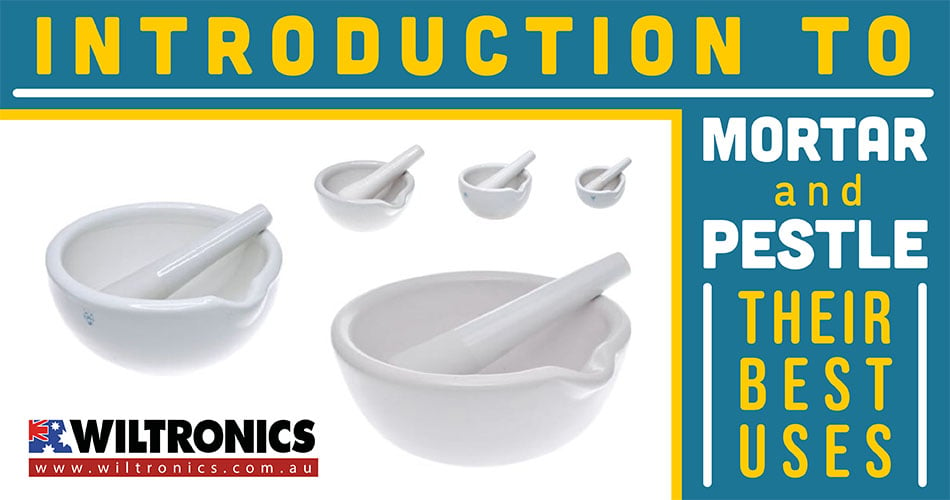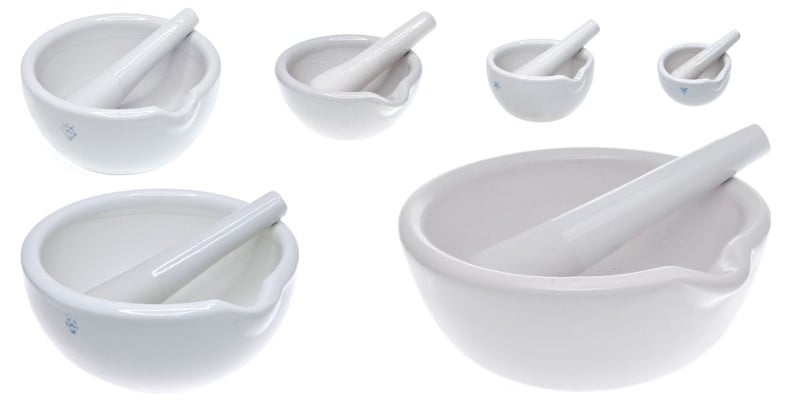Introduction to Mortar and Pestle and Their Best Uses
May 10, 2023

Discover the versatility of the mortar and pestle – an ancient tool that has withstood the test of time. Explore the various types of mortars, as well as the important role of the pestle in this dynamic duo.
Read on to learn about the best uses for this historically rich bowl and its club mate. Whether it is for kitchen or laboratory use, this guide has got you covered!
The Mortar and Pestle
A mortar and pestle have a long history dating back to ancient Egypt, Greeks, and Romans. This set of two tools was not only handy for food preparation but also medicine and cosmetics. Down the line, they found a place in early scientific experimentation.
Today, they are still widely used in both culinary and non-culinary applications. These include grinding spices and herbs, crushing pills, and mixing ingredients.
A mortar has a bowl-shaped cavity that is deep enough to hold ingredients. The flat bottom offers stability. The rim is wide enough for easy gripping, and some mortars have spouts for easy pouring of liquids. It is made of different materials, e.g. stone, ceramic, glass, and wood.
A pestle features a rounded end that fits perfectly inside the mortar. It is used to grind and mash ingredients by applying pressure and rotating it around the bowl. Pestles can be made of the same materials as mortars. Except, their shape and size may vary depending on their intended use.
By using this combo, you can control the texture and consistency of the ingredients. This results in a more flavourful and/or finer final product.
The mortar and pestle have stood the test of time and continue to be valuable to any kitchen or laboratory.
Different Types of Mortar and Pestles
Mortar and pestles come in different types based on their materials. The following are the four most common ones available in today’s market:
Stone
Mortar and pestles made of stone, such as granite or marble, are popular for culinary use. They are heavy and durable, making them ideal for grinding hard ingredients, e.g. spices and nuts.
Ceramic
Ceramic mortar and pestles are a popular choice for grinding spices, herbs, and seeds. They are lightweight, easy to clean, and available in a variety of sizes and colours.
The material is also widely used for chemicals in laboratories. It is non-reactive and does not contaminate the contents being ground or mixed. Moreover, high-quality porcelain can withstand high temperatures. This Porcelain Mortar and Pestle is an excellent example.

Ideal for grinding solids into smaller pieces or a fine powder and features a spout for easy pouring. Available in 60mm, 80mm, 100mm, 130mm, 160mm and 216mm diameters.
Glass
Mortar and pestles made of glass are common in labs for grinding and mixing chemicals. They are non-reactive and allow for easy observation of the contents being ground. They are non-porous and easy to clean, to add.
Wood
Wooden mortar and pestles are suitable for grinding soft ingredients. They are also often used for making guacamole and other dips. The material is lightweight but requires maintenance to prevent moisture and bacteria buildup.
The Uses
The specific uses of mortar and pestle can vary depending on the context. In the kitchen setting, the set is often used for crushing and grinding ingredients, such as:
- Whole spices. To grind peppercorns, cumin or coriander seeds, for instance, to create flavourful blends.
- Garlic. Crushing garlic cloves into a paste that can be added to sauces or marinades.
- Making pesto. For grinding together fresh basil leaves, pine nuts, garlic, and Parmesan cheese.
- Nuts. Crushing nuts such as almonds, cashews, or walnuts into a coarse powder or paste.
- Coffee beans. For grinding to a desired consistency. A manual alternative to pre-ground coffee.
In the laboratory setting, the set is typically used for preparing solid samples. It is particularly useful for breaking down hard, crystalline or fibrous materials. Examples are:
- Materials. To grind up hard and brittle materials such as quartz, feldspar, or mica into a fine powder.
- Tissue samples. To prepare drug samples for further analysis by homogenising a tablet.
- Chemicals. For mixing small amounts of solid chemicals together to create a new mixture.
- Food samples. For food science laboratories to prepare samples for nutritional analysis.
Be it in the kitchen or lab, the type of mortar and pestle used can vary based on the intended application.
Maintenance and Care
Proper maintenance and care are key to longevity, improved performance, and ensured hygiene. Most importantly, to keep the mortar and pestle in good condition for years to come. Here are some simple ideas:
1. Season it
Before using your new mortar and pestle, it is a good idea to season it by grinding a handful of uncooked rice in it. This helps remove any loose grit or debris and can help to smooth the surface of both tools.
2. Wash by hand
Avoid using a dishwasher to clean the set. Otherwise, the high heat and harsh detergents can damage the surface. Wash it by hand using warm water and mild dish soap instead. Rinse thoroughly and air dry.
3. Store properly
Store your mortar and pestle in a dry place away from moisture and direct sunlight. In a cabinet or on a shelf is your best bet.
4. Avoid acidic foods
Do not grind acidic ingredients, such as citrus or tomatoes, to prevent surface damage. Consider using a different grinding tool if necessary.
Over time, the surface of your mortar and pestle may become worn or rough. In this case, re-season it by grinding uncooked rice. Or you may use fine-grit sandpaper to smooth the surface gently.
The Bottom Line
Mortar and pestle are used across various cultures in the kitchen but are not limited to cooking. By understanding the types, uses, and maintenance, you can unlock their full potential. Whether you are a chef or a scientist – or simply just want to cook, investing in a set can help you achieve finer results.
© Electrotech Brands Pty Ltd 2023


Write a Comment
You must be logged in to post a comment.